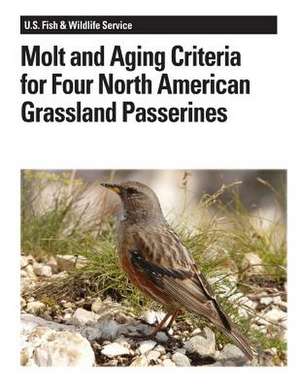Molt and Aging Criteria for Four North American Grassland Passerines
Autor Peter Pyle, Stephanie L. Jones, Janet M. Ruthen Limba Engleză Paperback
Preț: 90.04 lei
Nou
Puncte Express: 135
Preț estimativ în valută:
17.23€ • 17.100$ • 14.29£
17.23€ • 17.100$ • 14.29£
Carte disponibilă
Livrare economică 21 ianuarie-04 februarie 25
Preluare comenzi: 021 569.72.76
Specificații
ISBN-13: 9781479135493
ISBN-10: 1479135496
Pagini: 28
Dimensiuni: 216 x 280 x 2 mm
Greutate: 0.09 kg
Editura: CREATESPACE
ISBN-10: 1479135496
Pagini: 28
Dimensiuni: 216 x 280 x 2 mm
Greutate: 0.09 kg
Editura: CREATESPACE
